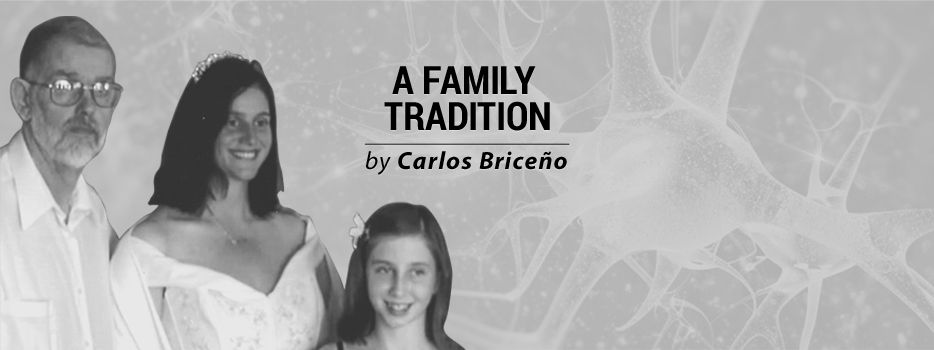Operation Warp Speed Should Inspire a Similar Effort for Rare Diseases

Whoever named Operation Warp Speed, the U.S. government’s project to produce and develop COVID-19 vaccines safely and effectively, got it right. In doing research for this column, I came across words like “unprecedented” and “breakneck” to describe not only how fast it took a vaccine to be approved, but also the speed at which it was developed.
What normally takes five to 10 years for research and development and clinical trials took five to 10 months for a COVID-19 vaccine.
Like any business, pharmaceutical companies face basic entrepreneurial risks, such as mass manufacturing a product that might fail to receive approval from the U.S. Food and Drug Administration. Tossing away potential treatments that aren’t approved is like burning money. But the U.S. government wanted to decrease that risk, so it doled out billions of dollars upfront to vaccine developers.
I happily wrote the paragraphs above as a way to share how teamwork and money can make a dream work to potentially eliminate the current nightmare of COVID-19.
But I’m also saddened that at the moment, no similar laser-focused effort by multiple agencies and pharmaceutical companies fueled by billions of dollars is occurring at such a level to find vaccines or cures for the roughly 7,000 rare diseases that affect 30 million Americans, 30% of whom are children who will not live to see their fifth birthday, according to the Rare Genomics Institute.
I realize that money in rare disease research must be spread across several research venues, and that billions of dollars already are being injected. But here’s a peek at the Huntington’s disease (HD) world, which sadly is where my gene-positive wife and daughter reside: A U.S. government agency poured $2 billion into neurodegenerative disease research in 2016, but HD-specific research garnered only $37 million of that amount, according to the organization Open Access Government.
So, I ask: Why can’t the same levels of collaboration, cooperation, teamwork, and money that exists in Operation Warp Speed occur for those suffering from chronic, serious, and life-threatening diseases?
I imagine that some could share reasons why an Operation ‘Rarp’ Speed, which mingles “rare” and “warp,” might never occur. But I’m a big believer that where there is a will, there is a way.
For instance, look what teamwork, focus, and money did for the production of war machinery during World War II. Time magazine reported that the U.S. pumped out the following over a five-year period: 299,000 combat planes, 3.6 million trucks, 100,000 tanks, 87,620 warships, including landing craft, 44 billion rounds of ammunition, and 434 million tons of steel.
I am not a scientist or a politician. I do not work for a pharmaceutical company. I am a husband and a father. Now that I have been starting to immerse myself in the rare disease community, I see the pain and suffering that exists within many people and families.
Thirty million souls in this community may not equal 330 million, the number of folks who currently are at risk in this country for COVID-19. But if you knew someone who had a horrible infectious disease like COVID-19, or was at serious risk of getting it, wouldn’t you want an Operation Warp Speed for your loved ones?
That is why I’m advocating for an Operation ‘Rarp’ Speed, because this country has already proven what laser focus, collaboration, and money can do when many people are at risk of suffering and dying way too early.
***
Note: Huntington’s Disease News is strictly a news and information website about the disease. It does not provide medical advice, diagnosis, or treatment. This content is not intended to be a substitute for professional medical advice, diagnosis, or treatment. Always seek the advice of your physician or other qualified health provider with any questions you may have regarding a medical condition. Never disregard professional medical advice or delay in seeking it because of something you have read on this website. The opinions expressed in this column are not those of Huntington’s Disease News or its parent company, Bionews, and are intended to spark discussion about issues pertaining to Huntington’s disease.







Sharon walker
Having lost a husband and now our daughter suffering with Huntington’s i’v been thinking exactly the same thing. Now one grandchild testing positive, and 4 others wondering about their fate, all our lives are a nightmare of coping with the past, present and future. I’m grateful to Nancy Wexler and all the research, but a cure is long over due for so many.
Carlos Briceño
My heart goes out to you for all the grief you've been through. May a cure be found in our lifetimes!
Ginger Phillips
My daughter is dealing with this horrible disease. She was confirmed in 2018. She has a 9 year old son. My son and granddaughter are also potentially candidates for this disease. I agree why can't this disease and others be put at warp speed. Studies have been going on for years and years to no avail. Please and thank you for all your efforts for there to be a cure very soon.
Carlos Briceño
I'm so sorry to hear that your daughter is dealing with this disease and that she has two children who may be at risk to have it too. I appreciate your words of appreciation for the points I made in the article and hope that we in the HD community can raise our voices loud enough to make some noise to get others to understand the importance of finding a cure.